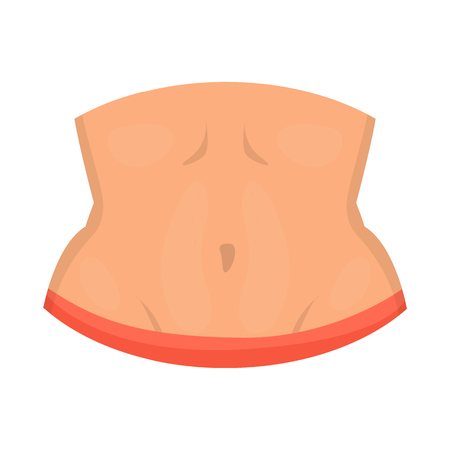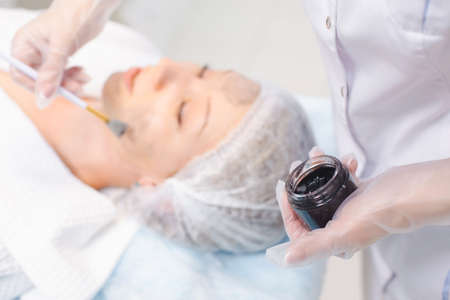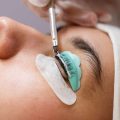Introduction to CoolSculpting
If youve ever wished you could target stubborn fat without surgery or downtime, youre not alone. Enter CoolSculpting—a cutting-edge, non-invasive fat-freezing treatment thats making waves across the U.S. beauty and wellness scene. But what exactly is CoolSculpting, how does it work, and why are so many Americans adding it to their body contouring wish list?
What Is CoolSculpting?
CoolSculpting is an FDA-cleared cosmetic procedure that uses controlled cooling technology—known as cryolipolysis—to freeze and eliminate unwanted fat cells beneath the skin. Unlike traditional liposuction, CoolSculpting doesnt require needles, anesthesia, or recovery time. That means you can get back to your daily routine right after your session.
How Does Fat-Freezing Technology Work?
The science behind CoolSculpting is surprisingly simple. Fat cells freeze at a higher temperature than other cells in your body. During treatment, a specialized applicator targets specific areas with cold temperatures. The treated fat cells crystallize and die off over time, then your body naturally processes and removes them for good. This process helps sculpt smoother contours in those hard-to-tone spots.
Key Features of CoolSculpting
| Feature | Description |
|---|---|
| Non-Invasive | No incisions or needles required |
| FDA-Cleared | Safe and effective for multiple body areas |
| Minimal Downtime | Most people return to daily activities immediately |
| Long-Lasting Results | Treated fat cells are gone for good |
The Rising Popularity of CoolSculpting in the U.S.
From Los Angeles to New York City, CoolSculpting has become one of the most sought-after non-surgical procedures in medical spas and dermatology clinics. Its appeal? A customizable approach to body shaping that fits into busy American lifestyles—no surgery required. Whether prepping for summer or looking to boost confidence year-round, more people are turning to CoolSculpting for targeted fat reduction where diet and exercise fall short.
2. FDA-Approved CoolSculpting Treatment Areas
When it comes to non-surgical fat reduction, CoolSculpting has become a go-to option for many Americans looking to target stubborn pockets of fat. The treatment works by freezing and eliminating fat cells, but it’s not a one-size-fits-all solution for every body part. In fact, the FDA has officially cleared CoolSculpting for specific areas where unwanted fat tends to stick around, despite diet and exercise.
Where Can You Use CoolSculpting?
The following table highlights the main body regions where CoolSculpting is FDA-approved for visible fat reduction:
| Body Area | Common Name | Description |
|---|---|---|
| Abdomen | Belly Fat | This is one of the most popular treatment zones, targeting love handles or the pouch below the belly button. |
| Flanks | Love Handles | The sides of your midsection, just above the hips—perfect for contouring your waistline. |
| Thighs | Inner & Outer Thighs | Treatments are approved for both inner and outer thighs to address stubborn “saddlebag” areas. |
| Upper Arms | Bingo Wings | The area at the back of the upper arms that can be tough to tone with workouts alone. |
| Submental Area | Double Chin | This targets under the chin to reduce fullness and improve jawline definition. |
| Bra Fat | Bra Bulge | The pocket of fat found near where the bra strap sits on the back or underarms. |
| Back Fat | Upper Back Rolls | Pockets of fat on your upper or lower back, often above or below your bra line (for women). |
| Underneath Buttocks | Banana Roll | The crease just beneath your butt cheeks that can be resistant to typical exercise regimens. |
What Makes These Areas Ideal for CoolSculpting?
The FDA-cleared areas have been clinically tested and shown to respond well to cryolipolysis—the science behind CoolSculpting. These are spots where localized fat tends to linger, making them prime candidates for targeted fat freezing. Whether you’re hoping to trim down your midsection before summer or finally tackle pesky arm bulges, CoolSculpting offers a non-invasive way to sculpt these specific zones without downtime or surgery.
Other Considerations Before Treatment
While these are the most common and officially approved areas, it’s important to consult with a licensed provider who can evaluate if you’re a good candidate. Each person’s body is unique, and results can vary based on factors like skin elasticity and overall health. Always make sure your provider uses FDA-approved devices and follows best practices for safety and efficacy.

3. Most Popular Zones for CoolSculpting
CoolSculpting has become a buzzword in American beauty clinics, and the most popular treatment areas say a lot about cultural trends and what patients care about. While this non-invasive fat-freezing technology can target several body parts, some spots are especially in-demand across the U.S. Let’s break down these hotspots and why they matter to Americans.
The Top CoolSculpting Treatment Areas in America
| Treatment Area | Nickname | Why It’s Popular |
|---|---|---|
| Abdomen | Belly Fat | Central focus for body confidence; ties closely to fitness culture and fashion trends like crop tops and swimsuits. |
| Flanks | Love Handles | A common trouble spot for both men and women; many seek a smoother silhouette for jeans and fitted clothing. |
| Submental Area | Double Chin | Driven by selfie culture and social media; Americans want sharper jawlines in photos and video calls. |
| Back/Bra Fat | Bra Bulge | Pain point for women; visible under tight shirts or dresses, especially in warmer climates where lighter clothing is popular. |
| Thighs | Inner & Outer Thighs | Popular among those looking to rock shorts or activewear, especially during summer or workout season. |
| Upper Arms | Bingo Wings/Arm Pouch | Targeted by people wanting more confidence in sleeveless tops, a big trend in summer fashion. |
Cultural Trends Shaping Preferences
The rise of athleisure wear, fitness influencers, and a growing focus on “body positivity” have all influenced which areas Americans choose for CoolSculpting. For example, the double chin area surged in popularity with the boom of selfies and video meetings—everyone wants to look good from every angle. Similarly, love handles remain a classic concern as denim styles shift back toward high-waisted fits and tighter silhouettes.
American CoolSculpting clinics report that clients often come in with specific wardrobe goals: fitting better into their favorite jeans, feeling more comfortable at the beach, or rocking a sleeveless dress at summer events. These cultural factors directly shape which treatment zones see the most demand.
4. Emerging Areas and Off-Label Uses
While the FDA has cleared CoolSculpting for use on several specific body areas—like the abdomen, flanks, thighs, upper arms, bra fat, back, underneath the buttocks, and submental (double chin)—some providers are pushing boundaries by applying CoolSculpting to additional regions. These emerging areas are often considered “off-label,” meaning they havent received formal FDA approval for treatment with this technology. Still, as the demand for non-invasive body contouring grows, patients are increasingly curious about what’s possible and safe.
Where Are Providers Exploring Off-Label CoolSculpting?
| Area | Why Patients Ask About It | Common Concerns |
|---|---|---|
| Knees (inner/above) | Stubborn fat pockets that don’t respond to diet/exercise | Skin laxity, uneven results |
| Axillary (“armpit pooch”) | Bothersome bulges in sleeveless outfits or bras | Nerve sensitivity, swelling |
| Ankles (“cankles”) | Desire for more defined calf-to-ankle transition | Limited fat volume makes effectiveness variable |
| Male chest (pseudo-gynecomastia) | Non-surgical option for chest contouring | Tissue composition (fat vs glandular), symmetry issues |
| Banana roll (under buttocks) | Smoother silhouette in leggings or swimwear | Sagging risk if too much fat is removed |
| Inner thighs/knee crease | Tight gap or streamlined look in shorts/dresses | Pinchable fat amount may be limited here |
What Patients Should Consider: Safety and Effectiveness
If you’re interested in treating an area not officially listed in CoolSculpting’s FDA clearance, it’s important to weigh both potential benefits and risks. Not all body regions respond the same way to cold-based fat reduction. For example, areas with very thin layers of fat may not see significant improvement—or could experience side effects like numbness or minor contour irregularities.
Questions to Ask Your Provider:
- Experience: Has your provider performed CoolSculpting on this off-label area before? Can they show before-and-after photos?
- Candidacy: Is there enough “pinchable” fat to treat safely?
- Risks: What side effects are more common in this region? How are complications handled?
- Alternative Options: Are there other FDA-approved treatments for this area that might be safer or more effective?
A Note on Results and Expectations:
The outcomes from off-label CoolSculpting can vary widely. While some patients achieve impressive improvements in these emerging areas, others may be better served by sticking to FDA-cleared zones or considering alternative treatments. Always have a detailed consultation with a board-certified provider who can assess your goals and recommend a safe plan tailored to your needs.
5. Who Is a Good Candidate?
If you’re thinking about CoolSculpting and wondering if it’s right for you, you’re not alone. Americans across the country are looking for easy, non-surgical ways to sculpt their bodies and boost confidence. But who really gets the best results from CoolSculpting? Let’s break it down.
Ideal Profiles for CoolSculpting
| Profile | Description |
|---|---|
| Healthy Adults | People in good overall health with no serious medical conditions. |
| Near Target Weight | Individuals within 20-30 pounds of their ideal weight, but with stubborn fat pockets. |
| Non-Smokers | Those who do not smoke or are willing to quit during the treatment period. |
| Realistic Expectations | People who understand CoolSculpting is for body contouring, not major weight loss. |
| Active Lifestyle | Regular exercisers who want to enhance their results and maintain them long-term. |
Lifestyle Considerations
Most Americans interested in CoolSculpting lead busy lives—they want quick, effective solutions that fit into their schedules. If you value:
- No downtime: You can return to work or daily life right after treatment.
- No surgery: There are no needles or anesthesia involved.
- Gradual changes: Results appear naturally over weeks—nobody has to know unless you tell them.
- Sustainable results: Maintaining a healthy lifestyle helps keep your new shape.
What Are Americans Seeking from Body Contouring?
The U.S. trend shows more people are prioritizing self-care, confidence, and convenience. Here’s what stands out:
- Targeted fat reduction: Popular areas include the abdomen, flanks (“love handles”), thighs, and under the chin.
- A boost in self-image: Looking good often leads to feeling good—especially with beach vacations and summer events on the calendar.
- No-fuss treatments: People want solutions that don’t interrupt their careers or family time.
- A safe alternative: Many prefer FDA-cleared procedures over invasive surgeries like liposuction.
If You’re Considering CoolSculpting…
If you check most boxes above and are ready for a little extra help achieving your body goals, CoolSculpting could be a perfect match for your American lifestyle. Remember, the best way to find out is by consulting with a certified provider who understands your needs and can guide you through your options.
6. What to Expect: The Patient Experience
The Typical CoolSculpting Session
If you’re thinking about freezing stubborn fat with CoolSculpting, you might be curious about what actually happens during a session. Here’s what most U.S. patients experience when they visit a medspa or dermatologist’s office for treatment:
| Step | What Happens |
|---|---|
| Consultation | Your provider assesses your body, discusses your goals, and maps out target areas for treatment. |
| Preparation | A gel pad is placed on the chosen area to protect your skin, then the CoolSculpting applicator is positioned. |
| Treatment | You’ll feel intense cold and some tugging as the device starts working. Most sessions last between 35-60 minutes per area. |
| Massage | After removing the applicator, your provider massages the treated area to help break up frozen fat cells. |
| Wrap-Up | You can return to normal activities right away—no downtime required! |
Recovery Time: Back to Your Routine Fast
One of the biggest perks of CoolSculpting is its minimal recovery time. Unlike surgical fat reduction methods, there’s no anesthesia, stitches, or significant healing needed. Most people head back to work, run errands, or hit the gym immediately after their session. Some patients report mild swelling, redness, numbness, or tingling in treated areas, but these effects usually go away within days or weeks.
Typical Recovery Timeline
| Time After Treatment | What Patients Notice |
|---|---|
| Right Away | Mild redness or numbness; most people feel fine to continue daily activities. |
| First Few Days | Slight swelling or tenderness may occur but typically doesn’t interfere with life. |
| 1-2 Weeks Later | Numbness or tingling can persist but fades over time. |
| 1-3 Months Later | Noticeable fat reduction appears as your body flushes out frozen cells naturally. |
Real U.S. Patient Feedback on Results and Satisfaction
Across the United States, patients generally report high satisfaction with CoolSculpting results—especially in areas like love handles, abdomen, and under the chin. Many say they notice slimming effects after just one session, though optimal results usually show after two or three months. Here’s what real Americans share about their post-treatment experiences:
- “I went back to work right after my appointment and nobody could tell I’d had anything done.”
- “The treated area felt a little numb for a couple weeks but it didn’t bother me.”
- “It took about two months for me to see a real difference in my belly area.”
- “The best part? No surgery and no downtime!”
7. Conclusion: Weighing the Pros and Cons
As CoolSculpting continues to grow in popularity across the U.S., it’s clear that this non-invasive fat-freezing treatment appeals to a wide range of people looking for targeted body contouring solutions. But like any cosmetic procedure, there are both upsides and downsides that shape its place in American culture.
Benefits of CoolSculpting
| Benefit | Description |
|---|---|
| No Surgery Required | No anesthesia, incisions, or recovery time needed, making it convenient for busy lifestyles. |
| Targeted Fat Reduction | Treats stubborn areas like the abdomen, thighs, arms, and chin with precision. |
| Minimal Downtime | Most people return to normal activities right after their session. |
| Cultural Acceptance | Fits into the wellness-focused, appearance-conscious trends common in American society. |
Limitations to Consider
| Limitation | Description |
|---|---|
| Not for Major Weight Loss | Best for those near their ideal weight who want to spot-treat fat pockets—not a replacement for diet or exercise. |
| Multiple Sessions May Be Needed | Some areas require more than one treatment to achieve desired results. |
| Potential Side Effects | Mild bruising, swelling, or numbness can occur but typically resolve on their own. |
| Cost Factor | Treatments can add up, especially when targeting multiple areas. |
Cultural Factors Influencing CoolSculpting in the U.S.
- Aesthetics Matter: The emphasis on looking good—especially in urban and coastal regions—has made non-surgical body contouring more mainstream.
- Convenience Rules: Fast-paced American lifestyles favor treatments with little to no downtime.
- Social Media Influence: Before-and-after photos and influencer testimonials fuel interest and acceptance nationwide.
- Diversity of Clients: Men and women alike are seeking CoolSculpting, reflecting changing attitudes toward self-care and cosmetic enhancements.
Main Takeaways on Treatment Areas
If you’re considering CoolSculpting, common areas include the abdomen, love handles, thighs, upper arms, back, bra bulge, double chin, and even under the buttocks (banana roll). Each area responds differently based on individual body types and goals. Consulting with a certified provider is key to determining if CoolSculpting is right for your target zones and expectations.

